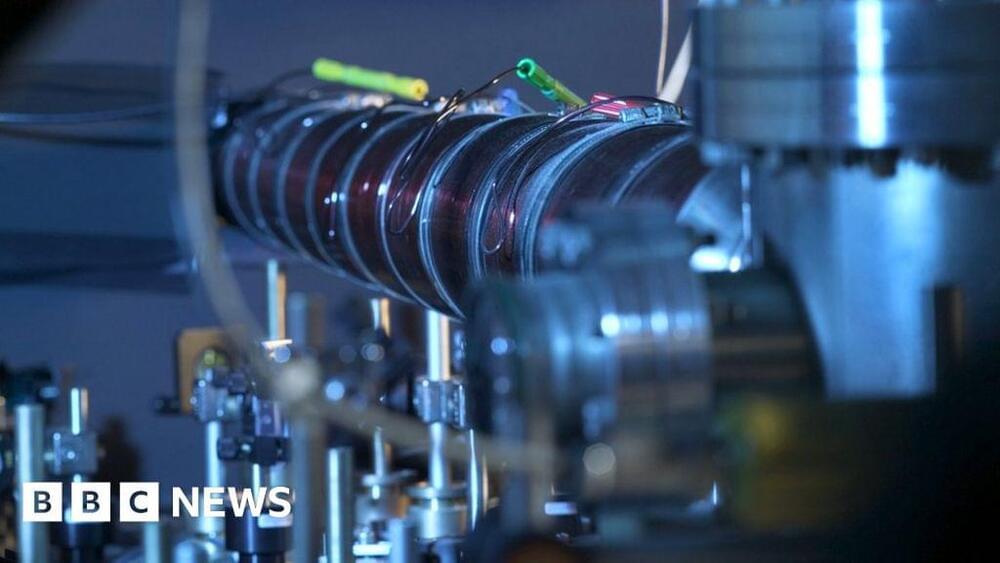Bioethicist Nita Farahany says privacy law hasn’t kept up with science as employers increasingly use neurotechnology in the workplace.


https://youtube.com/watch?v=I3WVc9iLi_s&feature=share
This video explores Age Reversal and 10 ways they will change the world. Watch this next video about digital immortality: https://youtu.be/sZdWN9pbbew.
► Udacity: Up To 75% Off All Courses (Biggest Discount Ever): https://bit.ly/3j9pIRZ
► Jasper AI: Write 5x Faster With Artificial Intelligence: https://bit.ly/3MIPSYp.
Official Discord Server: https://discord.gg/R8cYEWpCzK
Patreon Page: https://www.patreon.com/futurebusinesstech.
💡 Future Business Tech explores the future of technology and the world.
Examples of topics I cover include:
• Artificial Intelligence & Robotics.
• Virtual and Augmented Reality.
• Brain-Computer Interfaces.
• Transhumanism.
• Genetic Engineering.
SUBSCRIBE: https://bit.ly/3geLDGO
Disclaimer:
We may build incredible AI. But can we contain our cruelty? Oxford professor Nick Bostrom explains.
Up next, Is AI a species-level threat to humanity? With Elon Musk, Michio Kaku, Steven Pinker & more ► https://youtu.be/91TRVubKcEM
Nick Bostrom, a professor at Oxford University and director of the Future of Humanity Institute, discusses the development of machine superintelligence and its potential impact on humanity. Bostrom believes that in this century, we will create the first general intelligence that will be smarter than humans. He sees this as the most important thing humanity will ever do, but it also comes with an enormous responsibility.
Bostrom notes that there are existential risks associated with the transition to the machine intelligence era, such as the possibility of an underlying superintelligence that overrides human civilization with its own value structures. In addition, there is the question of how to ensure that conscious digital minds are treated well. However, if we succeed in ensuring the well-being of artificial intelligence, we could have vastly better tools for dealing with everything from diseases to poverty.
Ultimately, Bostrom believes that the development of machine superintelligence is crucial for a truly great future.
0:00 Smarter than humans.


How has fusion inspired the imaginations of science fiction writers? In The Expanse blockbuster book and TV series, fusion energy has changed the course of civilisation in extraordinary ways – for better and worse. Ty Franck, one half of the James S.A Corey writing duo behind The Expanse, and Canadian futurist and science fiction writer Karl Schroeder join Erica Vowles to weigh in on the fantasy and future of fusion.

A computer scientist is urging the world to record their elderly parents and loved ones as he predicts consciousness could be uploaded onto a computer this year. Dr Pratik Desai, who has founded multiple Silicon Valley AI startups, said that if people have enough video and voice recorders of their loved ones, there is a ‘100 percent chance’ of relatives ‘living with you forever.’

Researchers at the Institute for Quantum Optics and Quantum Information (IQOQI) in Vienna recently devised a universal mechanism to invert the evolution of a qubit with a high probability of success. This protocol, outlined in Physical Review Letters, can propagate any target qubit back to the state it was in at a specific time in the past.
The introduction of this protocol builds on a previous paper published in 2020, where the same team presented a series of time translating protocols that could be applied in uncontrolled settings. While some of these protocols were promising, in most tested scenarios their probability of success was found to be too small. In their new study, the researchers thus set out to create an alternative protocol with a higher probability of success.
“Our newly developed protocol inverts the unitary evolution of a qubit,” David Trillo, one of the researchers who carried out the study together with Benjamin Dive and Miguel Navascués, told Phys.org. “A qubit (or quantum bit) is a two-level quantum system that serves as the quantum equivalent of bits used in quantum computers. Any quantum system has some natural evolution in time that needs to be controlled or at least accounted for when designing physical processes around them (e.g., when building a quantum computer). Our protocol takes a qubit and outputs the same system, but in the state that it would be in if it had evolved backwards in time.”


AI research startup Anthropic aims to raise as much as $5 billion over the next two years to take on rival OpenAI and enter over a dozen major industries, according to company documents obtained by TechCrunch.
In the deck, Anthropic says that it plans to build a “frontier model” — tentatively called “Claude-Next” — 10 times more capable than today’s most powerful AI, but that this will require a billion dollars in spending over the next 18 months.

Space travel, exploration, and observation involve some of the most complex and dangerous scientific and technical operations ever carried out. This means that it tends to throw up the kinds of problems that artificial intelligence (AI) is proving itself to be outstandingly helpful with.
Because of this, astronauts, scientists, and others whose job it is to chart and explore the final frontier are increasingly turning to machine learning (ML) to tackle the everyday and extraordinary challenges they face.
AI is revolutionizing space exploration, from autonomous spaceflight to planetary exploration and charting the cosmos. ML algorithms help astronauts and scientists navigate and study space, avoid hazards, and classify features of celestial bodies.